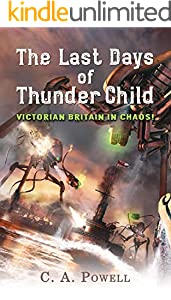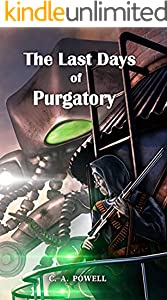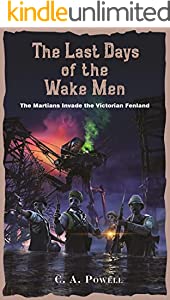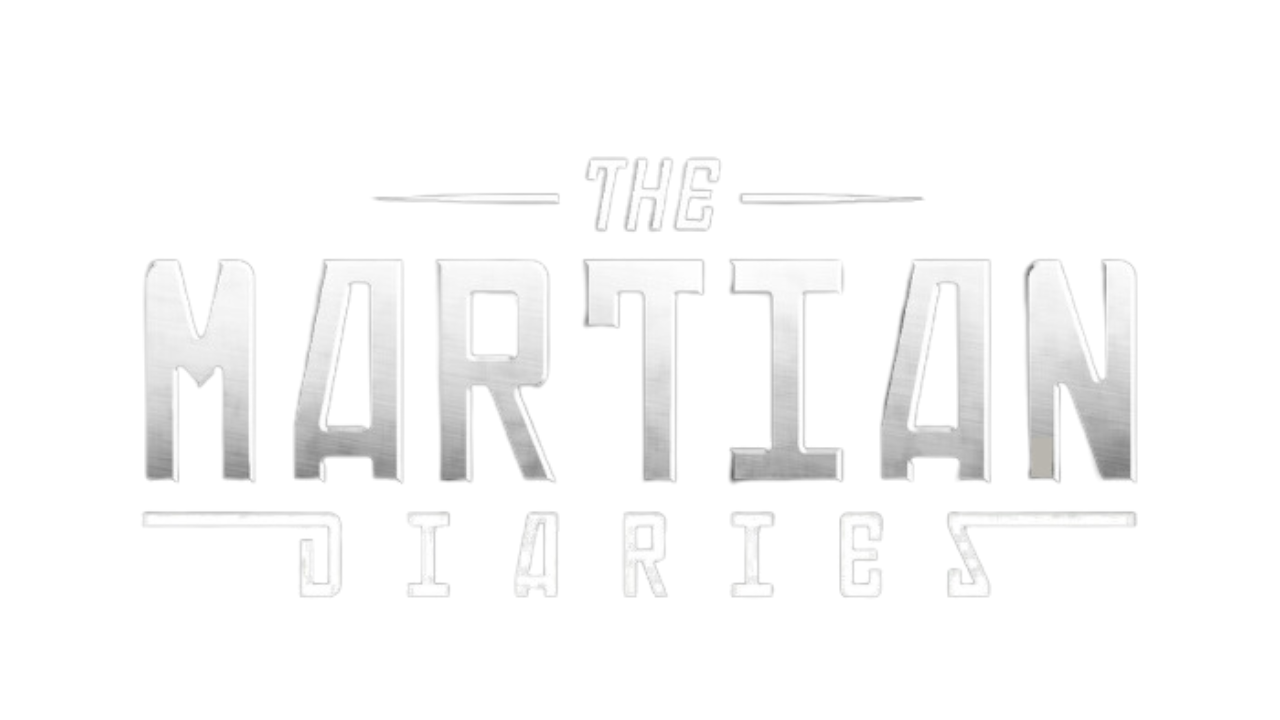The War Of The Worlds spin-offs
In conversation with author
C.A Powell
How I came to write The Last Days of… pastiche series
I’ve always wanted to write stories that people would enjoy reading. I think this came from English literature classes and an enthusiastic teacher that taught us so many things to look out for. I also became an avid reader travelling from Hornchurch in Essex to the city of London once I started work at the age of sixteen. I read a vast number of books that had an influence over me. I was especially fond of science fiction.
H.G. Wells’ The War of the Worlds was one that I enjoyed immensely. One of my favourite parts was the short section concerning HMS Thunder Child’s valiant attack on three Martian tripods and the heroic sacrifice the ship and crew make to save a paddle steamer.
It always stuck with me and I often let my own fantasy take over. I would imagine these Victorian and rather conservative people having their world turned upside down and destroyed by these hideous beings from another planet. I looked at areas where I lived and asked ‘what if it happened here’ questions.

The Last Days of Thunder Child – the first story
Our writing tutor always gave us around 500 to 1200 words of homework each week. One week we were asked to do a well-known story we had read and to approach it from a slightly different angle. Use our imagination - come into an established story for a short episode from an alternative perspective. I chose HMS Thunder Child sinking - Boy Seaman Perry waking from unconsciousness amid fire and smoke upon the sinking ship – HMS Thunder Child.
I read my 1200 words out in the class the following week and so many people liked it. Some of the established members began to encourage me to do a complete pastiche story about it. I had a Victorian ship design in mind and began to write as an aside project.
One day I finally realised that I was having great fun with the plot of my sci-fi pastiche novel. I decided to call it The Last Days of Thunder Child and realised that I had started to develop a good plot. Upon publication, I realised it was generating a steady flow of interest.

The Last Days of Purgatory – the third story
Then for my third story, I imagined East London where I lived as a kid, where I played in the 1960s and early 1970s. I wondered what it would be like there in 1898 when the Blackwall Tunnel had only just been opened.
I remembered the old Poplar dockers hospital.
For characters, I decided upon an over-confident whipper-snapper of a lad. Something like myself at age ten. I wanted a criminal who would somehow come good in a changed environment.
I also wanted a completely controversial character. A strange contradiction that is somehow acceptable in the post-apocalyptic world. I saw a graffiti piece of a nun with a gun. I’m not sure where, or if it was a Banksy but I wondered how such a contradiction (nun with gun) might be acceptable.

The Last Days of the Fighting Machine – the second story
My mind began to work overtime on a new story set in the part of Essex where I lived, an outer-lying hamlet called Paglesham Church End. I wondered and asked questions of myself, while working in the area:
1.“What would happen if a tripod came here?”
2. “Would the place be smothered in red weed?”
3. “Did the red weed start to die when the Martians began to die from disease and all manner of Earthly blights?”
I began to wonder about the survivors and what they did when they realised the Martians were susceptible to colds, measles and chicken pox, etcetera. Once again, I had splendid fun inventing a second story of survivors. I was like a school boy again, living inside my fantasy of Martian invaders and brave human survivors.

The Last Days of the Wake Men – the fourth story
For the fourth story, I wanted to elaborate on these Martians dying of disease. The minute Earthlings (germs) that were more lethal than anything the Martians could see.
I was now living in the Fenlands (eastern England) and I often passed a place where an old Victorian railway once stood. The fens and farmlands were below the level of the dyke walls of the River Nene and there were flood trenches all about the fields.
I thought of all the old railway infrastructure and piping networks that could be laid along the flood trenches, air circulation units like they had in mine shafts, conning towers and water tanks. Blow up the embankment wall and allow the fields to flood with people under water and inside the pipework. Pendulum mines below water level and a fanciful method of attack with medical staff dissecting the Martians and learning of the alien susceptibility to various germs.
Once again, I had great fun writing this story allowing all sorts of things to come to light. I was building and developing an approach of resistance aided by contagion and illness that H.G. Wells envisioned. I was trying to keep within the framework of his story, though I think
H.G. Wells might think I’m being optimistic on the mankind front.
This series is available in various formats on Amazon here https://amzn.to/3Revmlt
A fifth story, The Last Days Of The Unsightly Killers, will conclude the series. Find out more about C.A. Powell and his other books here https://www.facebook.com/AuthorC.A.Powell/
being optimistic on the mankind front.
THE WAR OF THE WORLDS SEQUELS
BOOKS:
The Second War of the Worlds by George H. Smith
Far Rainbow by Arkady and Boris Strugatsky
The London Pen
by Jean-Pierre Guillet
The Massacre of Mankind by Stephen Baxter
Return of the Martians by Mark Hood
The Last Days of Thunder Child by C A Powell

